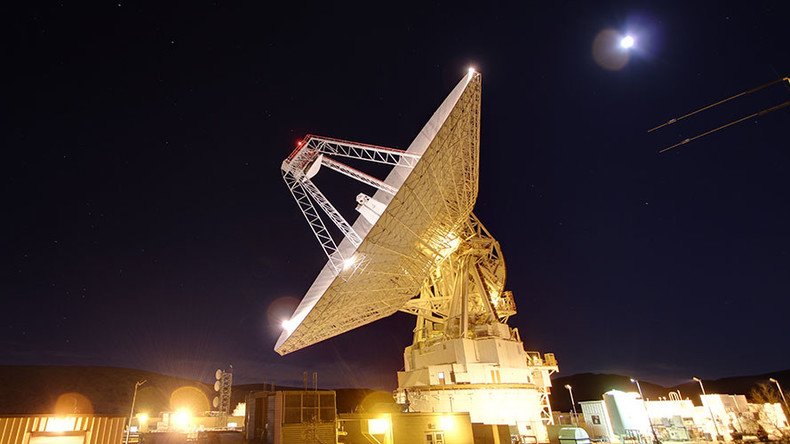1.5-mile-wide asteroid will ornament the sky on Christmas Eve

Anyone watching for Santa Claus tonight is more than likely to see a giant space rock. NASA snapped some dashing images of the 3,600-foot asteroid, which will fly close enough to see with a telescope, but thankfully won’t be any trouble for the man with all the toys.
“The closest this object will come to Santa and his eight tiny reindeer is about 28 times the distance between Earth and the moon,” Paul Chodas, manager of NASA's Center for Near Earth Object Studies at Jet Propulsion Laboratories (JPL), said in a NASA press release.
Asteroid 2003 SD220, as it is designated, will fly some 6.7 million miles away, and the NASA-captured images of it from this past week are from a comparable distance. From December 17 to December 23, NASA’s Deep Space Network antenna in Goldstone, California took photos of the object no farther than 7.3 million miles away, and the details are remarkable considering where the technology used to be.
Early holiday portrait of 2003 SD220. The #asteroid will make a safe pass by Earth Dec. 24 https://t.co/jv3tsBBflvpic.twitter.com/FIq4fAIKbS
— Asteroid Watch (@AsteroidWatch) December 23, 2015"The data acquired during this pass of the asteroid will help us plan for radar imaging during its upcoming closer approach in 2018," Lance Benner of JPL said.
Scientists say it will be at least 200 years before the asteroid threatens Earth with an impact that could wipe out a continent. First spotted in 2003, SD220 is now tracking 17.5 miles per second, and scientists believe it fully rotates once a week.
While NASA lists about 1,400 “potentially hazardous asteroids,” they also give a 0.01 percent likelihood of collision in the next century.
If you lack a telescope, Christmas Eve 2015 offers another celestial gift: a full moon. The last Christmas Eve full moon was in 1977, and the next one isn’t for another 19 years.
Enjoy a full moon this Christmas! Last one was 1977, & there won't be one again until 2034. https://t.co/GR2ezZ97gIpic.twitter.com/oDZnnxj0oK
— NASA (@NASA) December 24, 2015In other Christmas Eve history, in 1968 the Apollo 8 crew broadcasted what was at the time the most watched television event ever. Astronauts Bill Anders, Jim Lovell, and Frank Borman recited verses 1-10 of Genesis from the King James Version of the Bible.
#OTD Christmas Eve 1968, the Apollo 8 astronauts broadcast a public message to Earth from lunar orbit. @NASAHistory
https://t.co/020a8c9Nhq
— NASA (@NASA) December 24, 2015"We are now approaching lunar sunrise, and for all the people back on Earth, the crew of Apollo 8 has a message that we would like to send to you," Anders opened.
"And from the crew of Apollo 8, we close with good night, good luck, a Merry Christmas – and God bless all of you, all of you on the good Earth,” the message ended.












